I’m used to a lot of wildlife-generated anxiety on neighborhood apps. Sometimes it’s worry about coyotes eating their pets. Lately, it’s worry for the safety of the local squirrels.
I live in Boise, Idaho, and fox squirrels aren’t native here. The neighbor’s arguments that “We invaded their home” might be true for mule deer and mountain lions, but it’s not for fox squirrels. Humans brought them here.
Fox squirrels are familiar in many parts of the US, and so people assume they’re native. They are in the eastern part of the country, but not in the west.
There are some invasive species that get a lot of press. Zebra mussels, “jumping” carp and “murder” hornets and snakeheads warrant headlines in major media outlets.
Many others, though, are more mundane. Some species are so ubiquitous that people assume they’re native everywhere they’re found, even though they have become problematic invaders outside their home range.
Here are 8 invasive species that you may not realize are invasive. Some may be in your own neighborhood. Others might seem benign to you but are wreaking havoc in other places. Many of these are considered among the 100 most damaging invasives by the International Union for Conservation of Nature.
-
Eastern Gray Squirrel
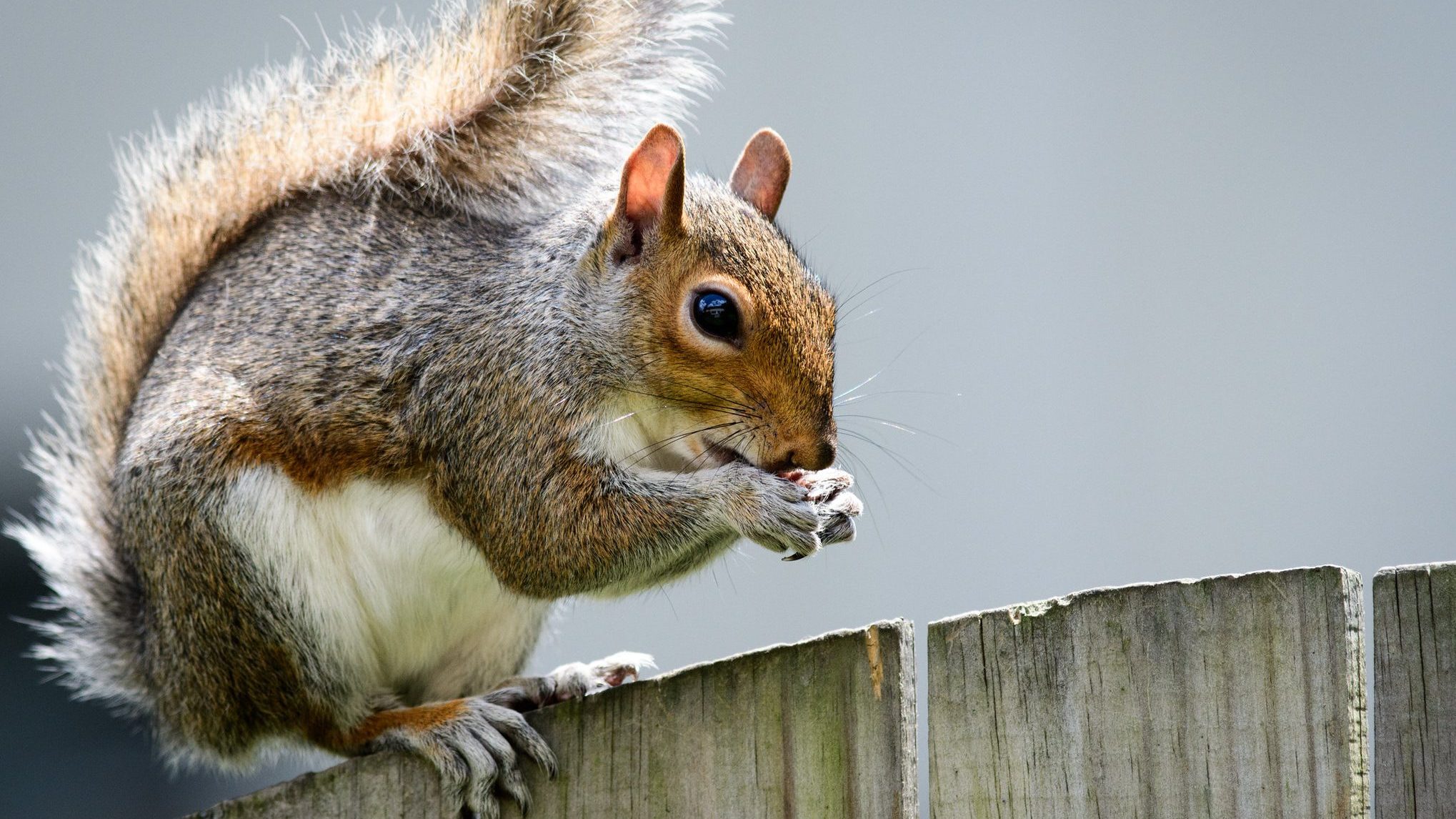
An eastern gray squirrel. © James / Flickr The eastern gray squirrel, like the fox squirrel, is native and abundant in the eastern United States. It’s a familiar critter in rural, suburban and urban habitats, to the point that many of us take them for granted.
But both squirrels have been moved widely around the globe. The eastern gray squirrel has been particularly bad for native squirrels. In the western United States, it has displaced the native Western gray squirrel, an attractive, silvery squirrel with a bushier tail. The Western gray squirrel is less able to adapt to humanity and also is often displaced by the eastern grays.
It’s even more bleak in the United Kingdom, where the eastern gray squirrel outcompetes the native red squirrel. Red squirrels have completely disappeared from large swaths of countryside. There are now 2.5 million gray squirrels and only 140,000 reds, and the gray squirrels continue to thrive despite expensive control measures.
-
American Bullfrog
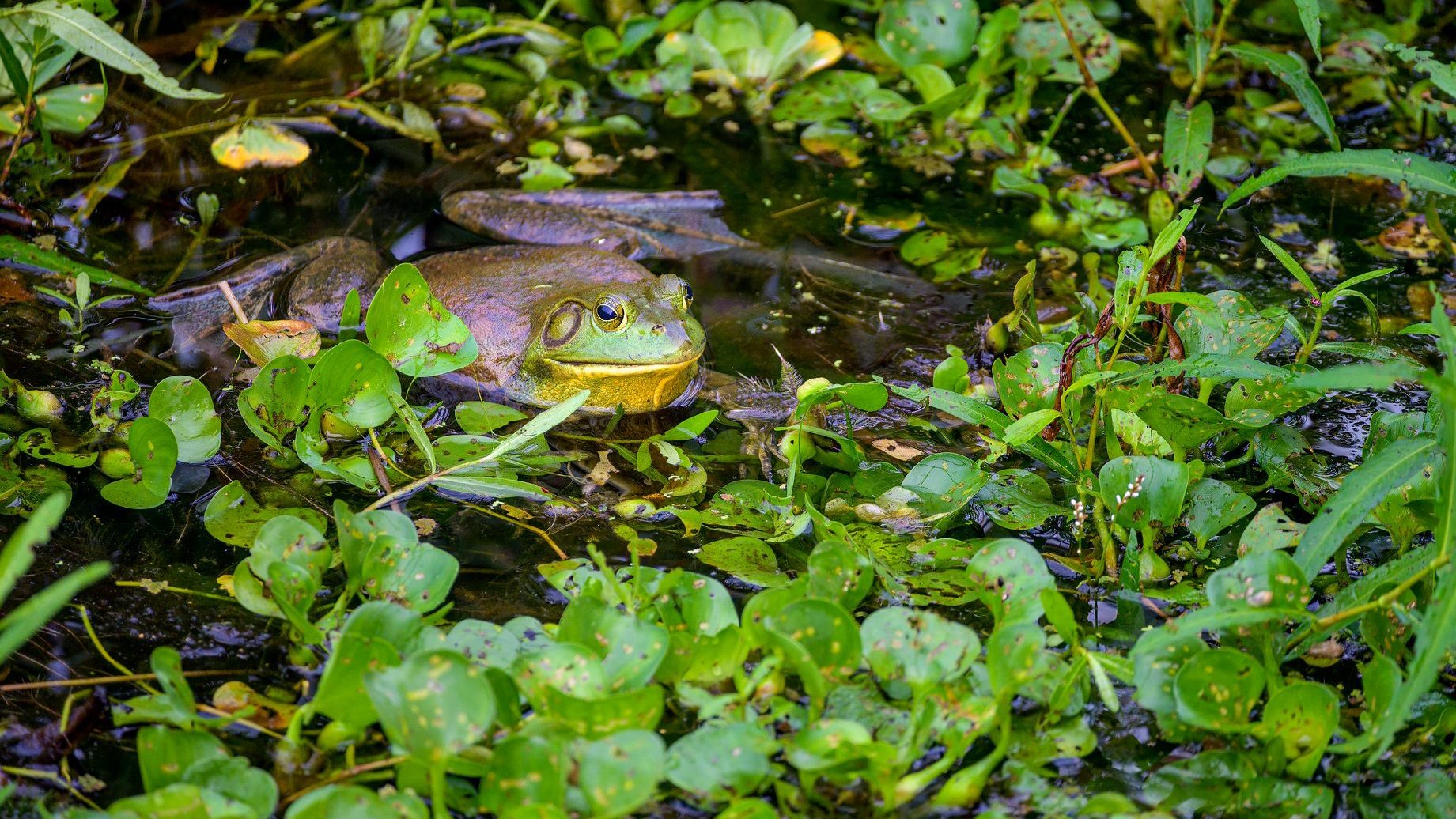
An American bullfrog. © Shiva Shenoy / Flickr To me, a croaking bullfrog is a welcome sound on a warm summer evening. And this large frog is native to a large swath of North America. But the American bullfrog also been spread farther across the country and around the globe, often introduced on purpose as a source of food. And it’s had disastrous consequences for other amphibians.
Bullfrogs will eat any prey they can stuff into their mouth: small fish, birds, rodents, other frogs. I’ve been surprised at the size of fly they will attack while I’m fishing. This is bad news for native amphibians that haven’t evolved with such a fierce aquatic predator.
American bullfrogs have also been implicated in the spread of the deadly chytrid fungus that has devastated amphibian populations. This has contributed to declines in native frogs and elsewhere.
-
Domestic Goat

A domestic goat. © Hans De Bisschop / Flickr Some of the most damaging invasives are livestock gone wild. Pigs and horses draw a lot of press (and controversy) in North America. But goats? Goats aren’t really a problem on the mainland United States, but globally they are tremendously damaging to native habitats, particularly on island ecosystems.
Many isolated islands around the globe have had herds of free-roaming goats, often dropped their by ship crews as a way of ensuring protein on the island when they returned. There are many stories about goats eating just about everything, and this is exactly what happens on islands.
The good news is, conservationists have developed methods that to eradicate goats on island ecosystems. This often involves aerial gunning with the aid of Geographic Information Systems and “Judas goats” that seek out companionship when released. This may seem brutal, but it’s been effective in restoring native habitat and biodiversity to many islands.
-
Common Myna
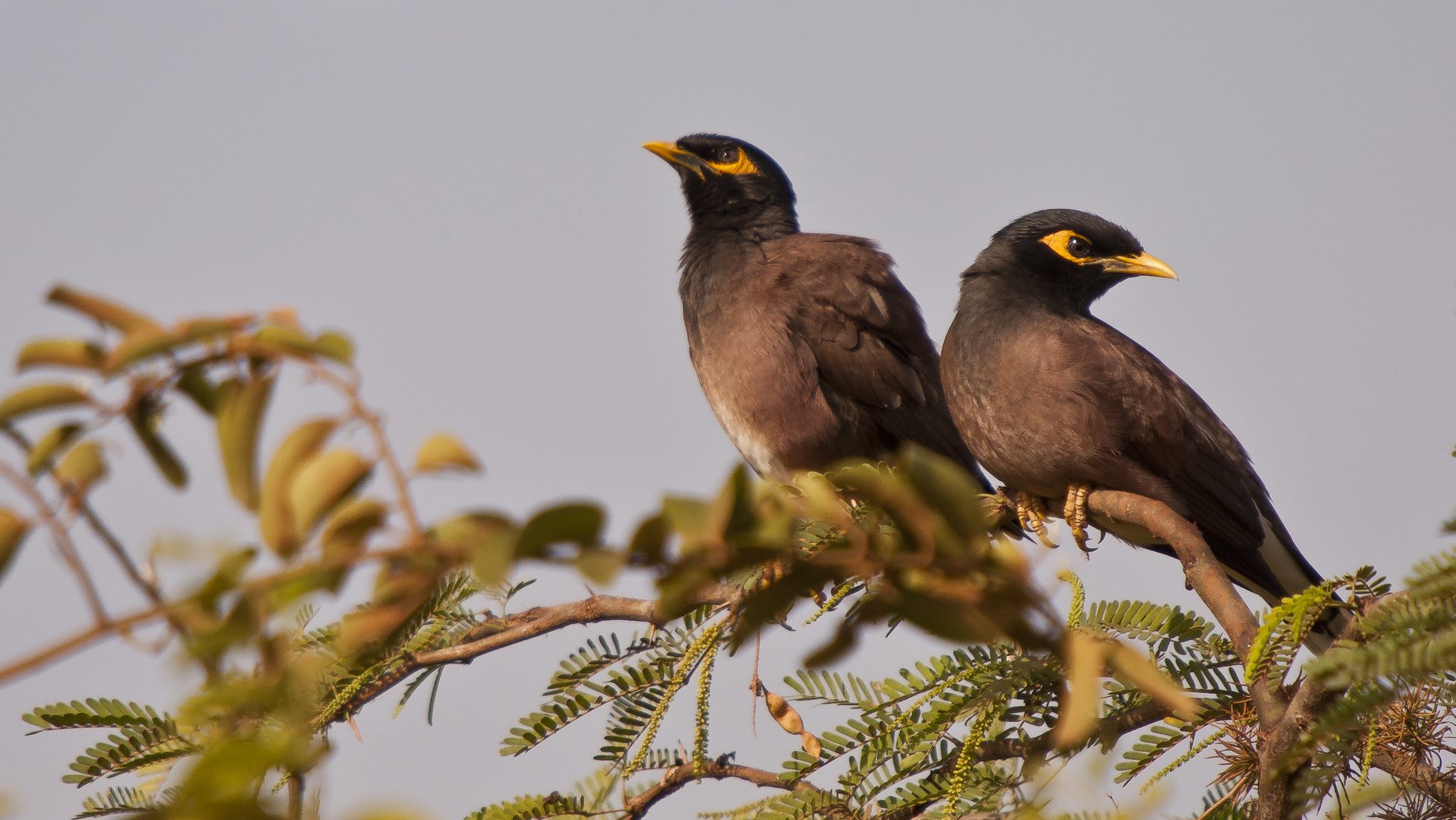
The common or Indian myna. © Srikaanth Sekar / Flickr There are only 3 birds that make the IUCN’s list of 100 worst invasives. You are likely familiar with the European starling. You may not know the red-vented bulbul, a pest on many Pacific islands. And then there’s the common myna.
The common mynah is native to Asia and known for its ability to mimic other sounds. This made it a popular pet in many parts of the globe. They’re also a pest in a long list of places outside their native range.
The common myna is highly adaptable, capable of thriving in a number of habitats. In Australia, the myna was initially introduced to control caterpillars, but it quickly became one of those instances where the cure became worse than the disease. It is now one of the most common birds in cities.
On Fiji, the IUCN reports “it congregates on the seashore feeding off crustaceans and other stranded sealife.” In the United States, populations are established in South Florida, where they drive purple martins away from nest sites. The myna is one of those aggressive birds that quickly commands nest boxes, outcompeting native birds.
-
Smallmouth Bass
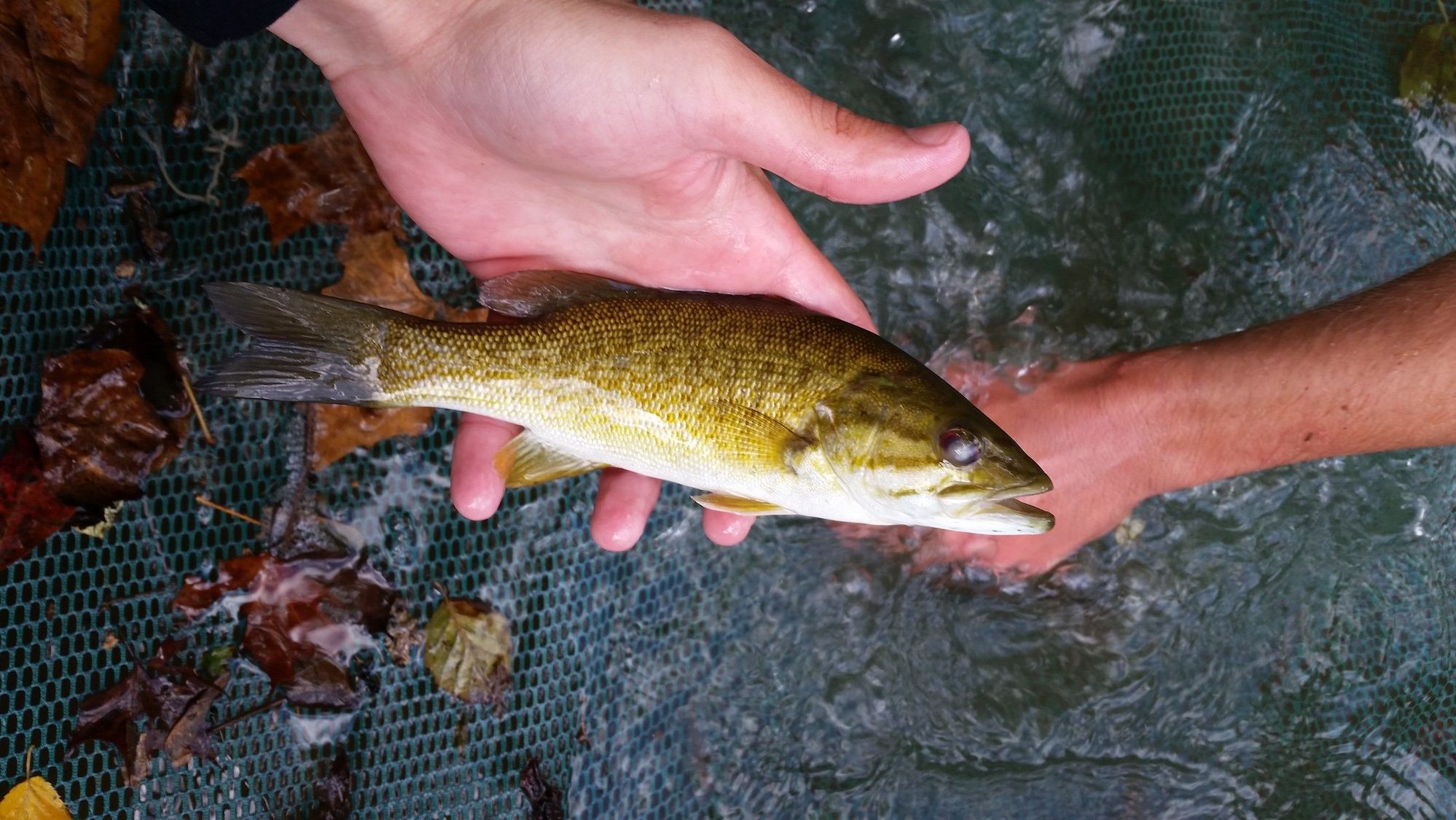
A smallmouth bass. © Brian Wulker / Flickr I grew up along the Susquehanna River, one of the main rivers in the Chesapeake Bay. One of its claims to fame is great smallmouth bass fishing. Conservationists worry over the fate of the bass. I imagine many people consider the smallmouth bass native—perhaps even a keystone species—of the watershed.
It’s not. Smallmouth bass are native to the upper Mississippi, Great Lakes and Hudson Bay, but not many of the eastern rivers known for their bass fishing. In 1869, a sportsman’s group introduced 25 smallmouths to the river, and they quickly spread and prospered.
In this altered system, they aren’t considered invasive. In fact, many conservationists consider the smallmouth an indicator of water quality, as in recent years these fish have faced skin lesions and population declines.
But the smallmouth is non-native and invasive in other waters around the globe. In the western United States, they are expanding their range due to warming waters, posing threats to native trout and other species.
-
Red-eared Slider
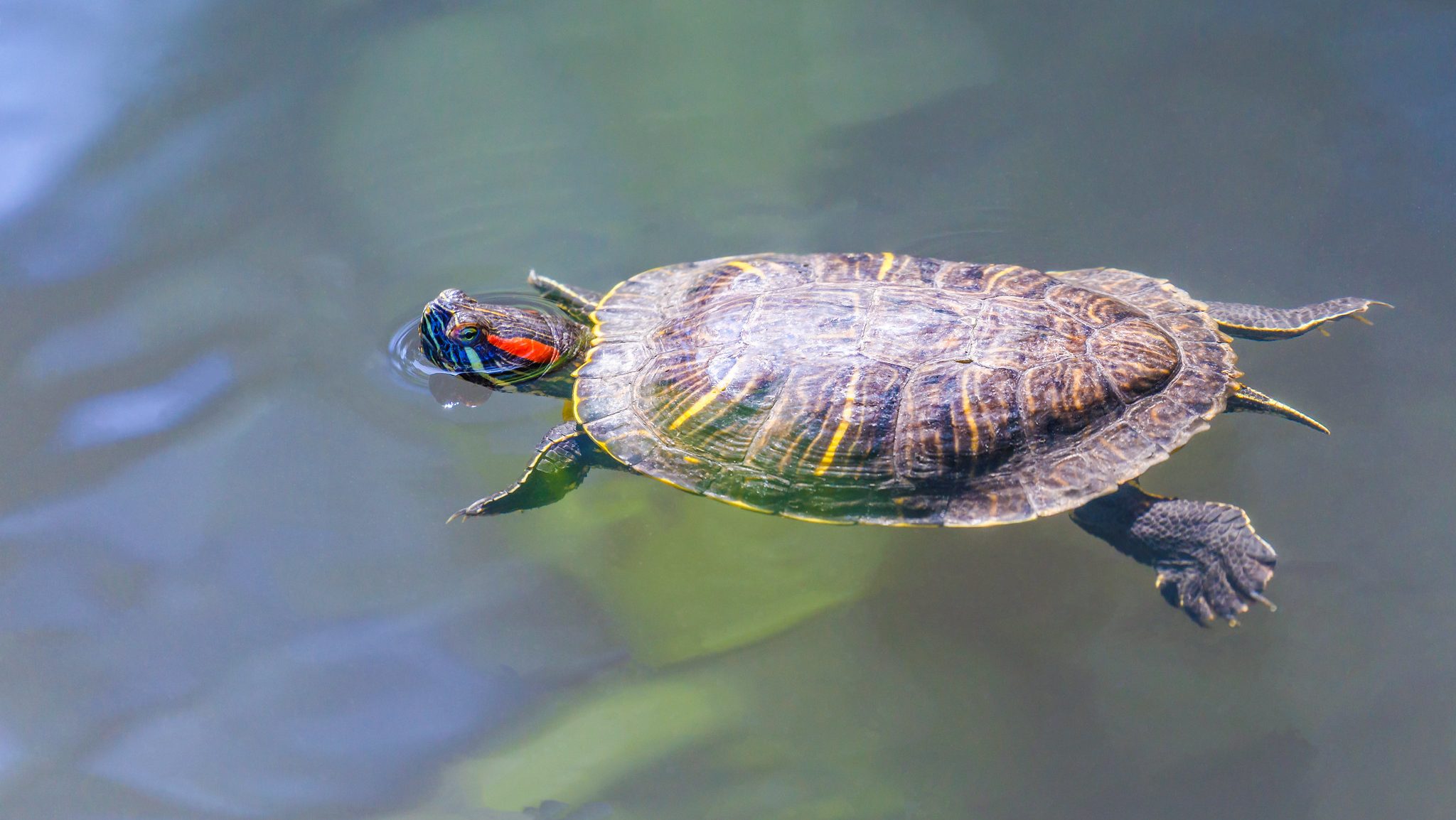
A red-eared slider. © Allan Hack / Flickr Some of the most problematic invasive species – including Burmese pythons and feral cats – originated as escaped or released pets. Red-eared sliders are native to the southern United States. And they’re popular pet turtles, at least as babies. As they grow larger, their charm fades but the demands on the pet owner grow.
Many owners do what they believe to be kind: release the turtle in the local pond. The peak of turtle releases in the United States was in the 1990s, because many kids bought pets due to the Teenage Mutant Ninja Turtle craze.
Due to such releases, red-eared sliders are now found on every continent except Antarctica. In the Pacific Northwest, they’re so common that many people assume they’re native. After all, turtles seem pretty benign. They’re not like, say, feral pigs.
But red-eared sliders directly outcompete native turtles, and also carry harmful parasites and diseases. Several states in both the United States and Australia now restrict or prohibit keeping these turtles as pets.
-
Red Swamp Crayfish
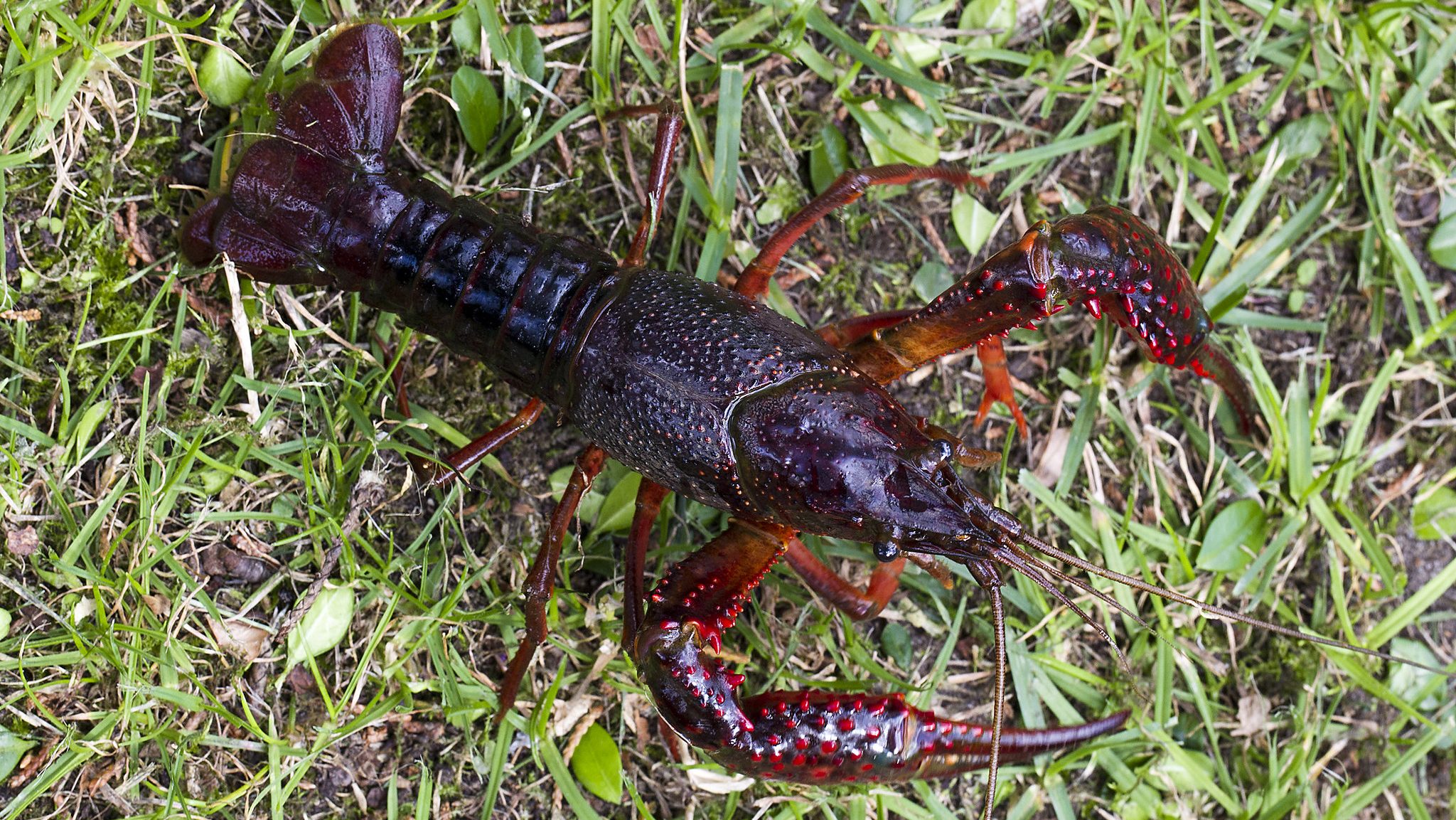
A red swamp crayfish. © webbed / Flickr Like many nature-loving kids, I loved catching crayfish in the local creeks. While I learned to identify the local bird species at an early age, I thought a crayfish was a crayfish was a crayfish. It seems many outdoor enthusiasts believe the same. In truth, there are approximately 500 crayfish species, 400 of them found in North America.
One of the biggest threats to native crayfish is…other crayfish. The red swamp crayfish, known to anyone who has enjoyed a crawfish boil, is one of the worst. Native to the southern United States and northeastern Mexico, it’s now found in 40 countries.
They were introduced for food in many places, either intentionally released in the wild or escaped from aquaculture facilities. Highly predatory, they have reduced amphibian populations in some areas. In Europe, they have reduced native crayfish populations.
New populations are now being found by citizen scientists, who now recognize crayfish diversity and whose reported observations can help wildlife managers control new infestations.
-
Rainbow Trout

A rainbow trout. © Matthew L. Miller The rainbow trout is one of the most beloved gamefish on earth. It’s also an invasive species. It’s native to the western United States. But beginning in the late 1800s, it began being reared in hatcheries and spread around the world. To read more, I highly recommend Ander Halverson’s excellent book, An Entirely Synthetic Fish: How Rainbow Trout Beguiled America and Overran the World.
Rainbow trout are often used by fisheries managers in “put-and-take” fisheries. Streams are stocked and anglers catch the trout for dinner soon thereafter. In many of these streams, the rainbows never reproduce. But rainbows have established populations in many parts of the world.
They are found in the highest large lake in the world, Lake Titicaca in the Andes. They’re found in South Africa and Chile and the Himalayas. This is often assumed to be benign, but in many places, they endanger the native species. In the United States, they hybridize with cutthroat trout. In South Africa, they compete with and eat endemic species.
Attending the American Fisheries Society conference last year, I was surprised by how many sessions concerned the negative impacts of introduced rainbow trout and other trout species. Snakeheads, an invasive species in the Potomac drainage, are called Frankenfish and earn hyperbolic headlines in the New York Times. Trout are revered. If we’re evaluating the global impacts of invasive species, though, there’s no doubt: Rainbow trout are much more damaging to native fauna than northern snakeheads.
Looks can be deceiving. And human perceptions often favor the charismatic over what they deem as ugly. Sometimes, the invasives we don’t know end up being among the worst.
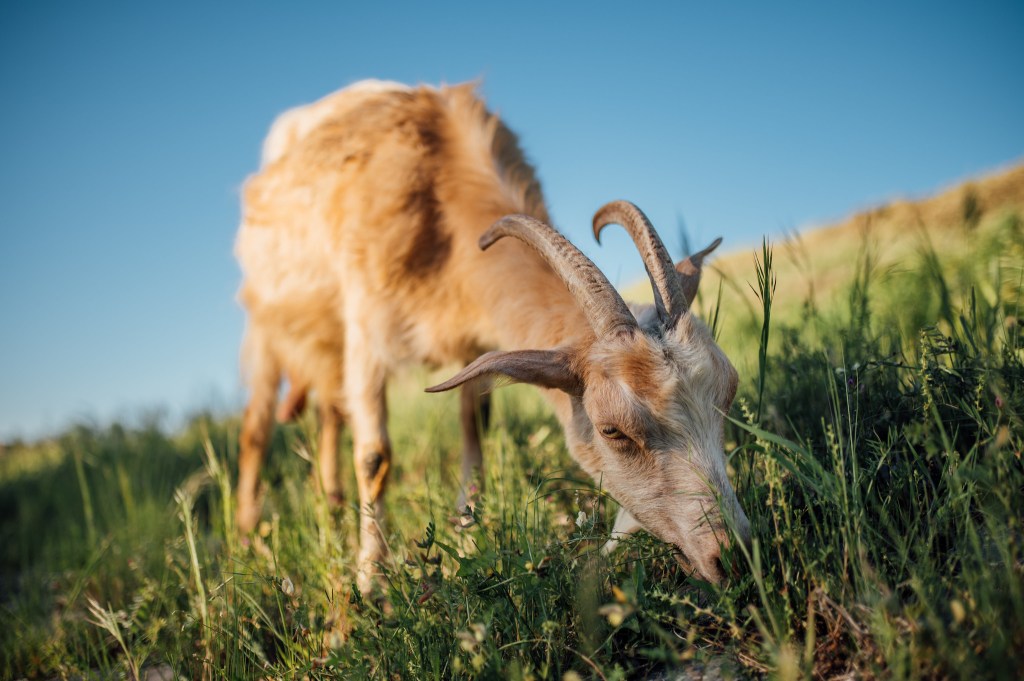



I think humans will take themselves out as a species. The great regret is that they will take many current species out along with them.
Agree with Bonita! Like AI Agent Smith in The Matrix said of humans, “They’re a VIRUS!”
And like like Kurt Cobain said, “I feel stupid. And contagious!” 🙁
you forgot the horse.
The most invasive species of all is the common human. They have inserted themselves on every continent and in every ecosystem. They bring and raise their invasive pets, livestock, and nonhumans for meat and spread out over millions of acres. Without them, there would be intact environments with the nonhumans evolved to inhabit them.